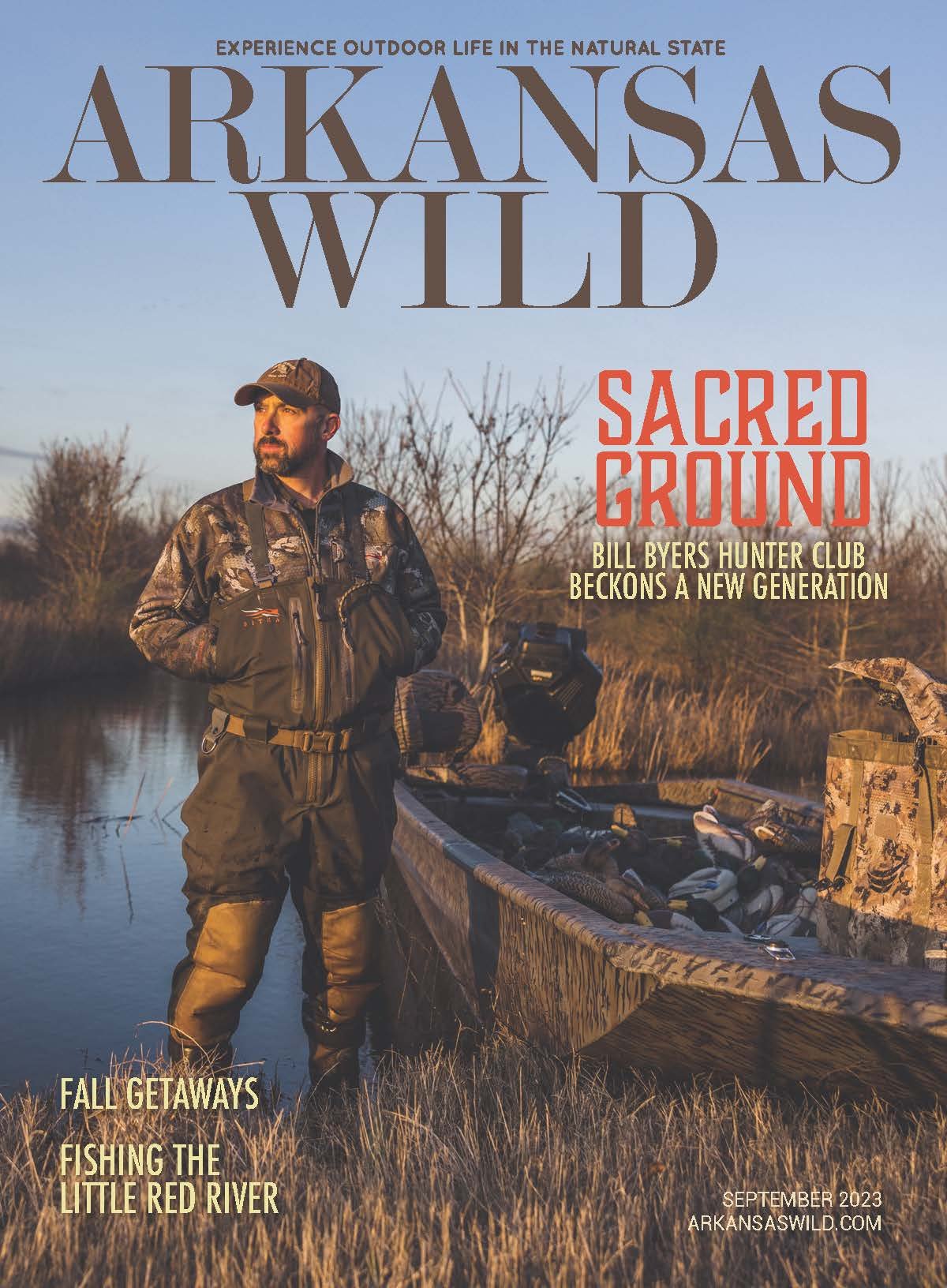Campside Cooking
Dutch oven cooking elevates camp cuisine beyond burgers and dogs
By Michael Roberts Photos By Jason Masters
Somehow, I've made it 37 years without ever using a Dutch oven over an open fire to cook a meal. I've done what so many do with my campsite eats–grill burgers or hot dogs, or even worse, eat my meals out of cans like some sort of savage.
But it finally happened, on a beautiful day right outside a yurt in Petit Jean State Park: I set a fire, I let it burn to coals and I produced a tasty meal right there with a 14-inch cast iron Dutch oven hanging from a tripod. Did I make mistakes? Most assuredly. But for feeding a hungry crew after a day romping the wilderness, I think a Dutch oven is a vital piece of camping equipment.
Dutch ovens inspire some real reverence among their fans. Arkansas has Dutch oven clubs, including the Arkansas Dutch Oven Society (ADOS), and these clubs hold cook-offs–Dutch Oven Gatherings (DOGS)–where everyone gets together to show off their skills at manipulating heat to achieve the result everybody wants: delicious food. Over on the ADOS website (arkdos.org), there is an encyclopediaís worth of recipes, cooking tips and information about equipment, and I spent a good long while there in preparation for my Sunday stew.
Of course a stew is pretty simple, which is why I chose it for my inaugural dish. For experienced Dutch oven cooks, things like pineapple upside down cake, yeast breads, brownies and roasted chicken can all be done in that cast iron kettle. It's a fascinating throwback to a time before thermostats and knobs that make indoor cooking a snap. And of course, everyone knows that food cooked outside tastes better.
But no first time is without mistakes. At first, my fire was far too large, requiring some creative use of a marshmallow roasting stick to make things right. At one point I had the kettle too close the coals, resulting in a small (ok, medium) boil-over situation that caused some flare up and a general sense of panic in the camp. But when I pulled my dish at last and took a taste, I was all smiles–it was not only edible, it actually tasted good. And if I can do it, anyone who wants to eat better while camping can do it–and I guarantee you'll be the envy of everyone around you when you set up your sharp black tripod and start breaking out the cast iron.
Interested in growing your own camp cooking repertoire beyond the burger and the dog? Bass Pro Shops in Little Rock conducts Dutch oven classes the first Tuesday of every month from 7 p.m. to 9 p.m.–which is quite convenient, since they sell a complete line of accessories to get your rig working right.
Campfire Beef Stew
Ingredients
- 2 pounds chuck roast, cut into 1-inch cubes
- 1 paper or plastic bag
- 1 cup flour
- Salt and pepper
- Cooking oil or shortening
- 1 cup celery, sliced
- 1 cup carrots, sliced
- 1 large onion, diced
- 3-4 cloves garlic, diced
- 1/2 tablespoon rosemary, chopped
- 1 tablespoon thyme, chopped
- 4 cups beef stock (or if space is limited use water and 6-8 beef bouillon cube
- 4 cups water (may substitute beer for 2 cups of this)
- 1 pound red potatoes, cut into pieces
Directions
1. Place flour in the paper or plastic bag, then add a generous amount of salt and pepper depending on taste preference. Add the cubed beef and shake vigorously so that the meat is well coated.
2. Add 1/4- to 1/2-inch of the oil or shortening to the Dutch oven away from the open flame. Hang the Dutch oven so that it is 12- to 18-inches from the coals. When the oil is hot, add the meat and brown, cooking in batches to avoid overcrowding. Set batches aside on a platter until all the meat is brown.
3. Add the onions, celery, carrots and all meat back to the pot and stir well. Allow the vegetables to cook for 5 to 15 minutes, until the onions start to turn translucent. For a darker stew, cook the vegetables until they begin to caramelize, approximately 20 to 25 minutes.
4. When the vegetables have reached their desired state, add the garlic, rosemary and thyme and stir well. Cook for 2 to 3 minutes, taking care not to let the garlic brown. Add the beef stock and two cups of the water (or beer). Add the potatoes. Adjust the height of the Dutch oven so that the mixture simmers but does not boil.
5.Cover, and let simmer 1 to 2 hours, checking to adjust seasonings and stir every 20 minutes.
Dutch Oven Care Tips
*Keep your oven dry: Cast iron cooks with a wonderful, even heat but it has one major enemy: moisture. After use, clean the oven as soon as possible and thoroughly dry it before storing. Between uses, be sure the oven is kept in a dry place so that rust doesn’t give a nasty surprise during the next trip’s packing.
*Oil it up: After washing and drying, apply a thin coating of oil to the interior and exterior of the Dutch oven, then wipe off the excess with a paper towel. Oil provides a good barrier against moisture, helping protect that rust-prone iron.
*Wick it: One way to help combat moisture is to leave the lid slightly ajar on the oven and place a rolled up paper towel in the crack. The towel will act as a wick to keep moisture out of the oven.
*Get gear: For the serious Dutch oven cook, investing in protective cases and carrying bags is another way to protect your cookware. A good cast iron oven can last a lifetime and beyond with the proper care, so protective gear can be seen as an investment in many delicious meals to come.






